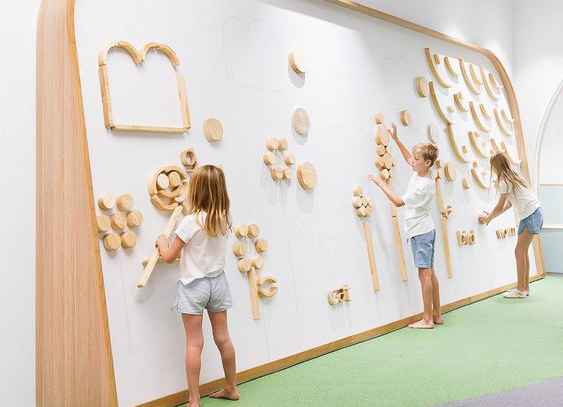Views: 0 Author: Site Editor Publish Time: 2024-05-08 Origin: Site








Children’s hospital relies heavily on the influence of the environment to shape treatment effectiveness and the overall experience. Therapy clinics, with their vibrant colors and engaging décor, significantly impact young patients' well-being and progress. In this article, we will recognize the pivotal role of creative décor in these hospitals, enriching therapeutic interventions and supporting children's developmental journeys.
Understanding Pediatric Patient Needs:
Pediatric patients have unique physical, emotional, and developmental needs that are critical to healthcare design. Environments must accommodate children from infancy through adolescence, providing safety, engagement, and support for their stages of growth. Incorporating age-appropriate furnishings, playful decor elements, and family-friendly amenities fosters an environment where children feel valued, welcomed, and empowered in their healthcare journey.
The Power of Creative Decor: Enhancing Therapy Environments
Creative décor goes beyond aesthetics to create immersive and stimulating environments that promote engagement, motivation, and emotional well-being. Incorporating themed murals, interactive play areas and sensory textures transforms therapy clinics into welcoming spaces where children feel encouraged to explore and participate in their treatment journey.

Benefits for Patients:
1. Reduced anxiety and stress:
Creative décor eases the anxiety and stress inherent in medical settings, providing comfort and familiarity for young patients. Surrounding children with cheerful colors and familiar themes evokes positive emotions and reduces anxiety about therapy sessions.
2. Enhanced Engagement and Participation:
Interactive features such as wall-mounted puzzles, sensory panels, and interactive floor projections encourage active participation in therapy activities. These features engage children and engagingly facilitate learning and skill development.
3. Support for Sensory Integration:
Sensory-rich décor, including textured walls, soft seating, and sensory bins, encourages sensory exploration and integration, which is critical for children with sensory processing difficulties. Tailoring environments to different sensory needs optimizes treatment outcomes and supports sensory development.
4. Promotion of Social Interaction:
Creative decor fosters social interaction and peer engagement, facilitating collaboration during group therapy sessions or play-based activities. Well-designed therapy environments encourage socialization and peer support, promoting positive social skills and patient friendships.
Benefits for practitioners:
1. Improved Therapeutic Outcomes:
Thoughtfully designed therapy environments enhance therapeutic interventions by providing conducive skill acquisition and practice spaces. Practitioners leverage creative decor to create thematic treatment areas, optimizing the therapeutic process and promoting progress.
2. Enhanced Therapist-Child Interaction:
Creative decor fosters therapist-child engagement, building rapport and trust between practitioners and their young clients. Playful elements create a comfortable atmosphere, promoting communication and cooperation during therapy sessions.
Conclusion: Elevating Pediatric Therapy Environments with Creative Decor
In conclusion, creative decor profoundly impacts pediatric therapy environments, optimizing patient outcomes and experiences. At Hongye Furniture, we prioritize designing visually appealing and purposefully crafted therapy clinics. By harnessing the power of creative decor, therapy clinics can create nurturing, engaging, and therapeutic spaces that inspire healing, growth, and development in children of all abilities.